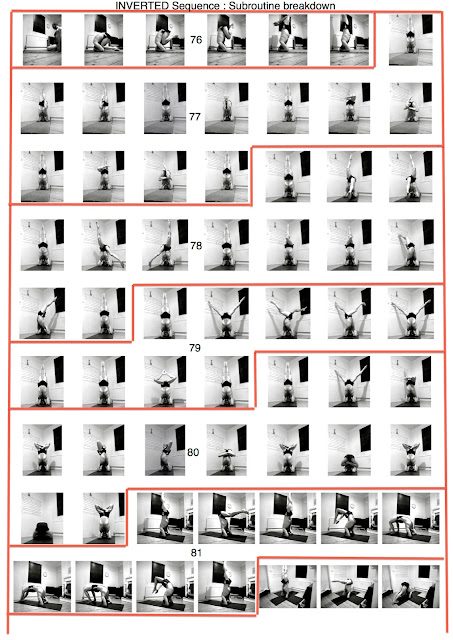 |
| VIDEO LINK |
'...when sirsasana is mastered, the breath rate, which is normally about fifteen to twenty breaths per minute, automatically comes down',
Work towards two breaths a minute over time.
'Sirsasana should always be practiced in the morning, as is laid down by the authorities on yoga.'
'And, as a counterpose, it should be followed by an equal length of time in the practice of sarvangasana (shoulder stand)'.
'The procedure is thus to do sirsasanam for twenty-four breaths, followed by a two-minute rest in savasana. Then one should do sarvangasana for the equal number of twenty four breaths, followed by a sitting posture each as padmasana for a few breaths, until one feels normal and relaxed'.
from Srivatsa Ramaswami Yoga for the Three Stages of Life p142
Practicing Inverted Subroutines
Towards the end of my morning asana practice I spend few minutes in the sarvangasana preparatory postures, anapanasana, urdhva prasarita pada hastasana and dwipadapitam.
I then spend at least five minutes in sarvangasana, the first three minutes with the legs relaxed.
Then I practice for headstands for ten to twenty minutes (ten minutes minimum).
For the first five minutes I don't practice any vinyasas but try to slow my breathing towards two breaths a minute and work on engaging bandhas.
The rest of the time in headstands I spend on Vinyasas, one or more of the inverted subroutines.
Coming down from headstand I'll stay for a few moments with my forehead on the mat, when sitting up I'll bring my head up last.
After a couple of minutes in savasana I practice another five minutes of Sarvangasana (shoulder stand), this time practising vinyasas, one or more shoulder stand subroutines
Finally I'll spend a period of time in Vajrasana, padmasana or mahamudra before moving on to my pranayama practice.

No comments:
Post a Comment
Note: only a member of this blog may post a comment.